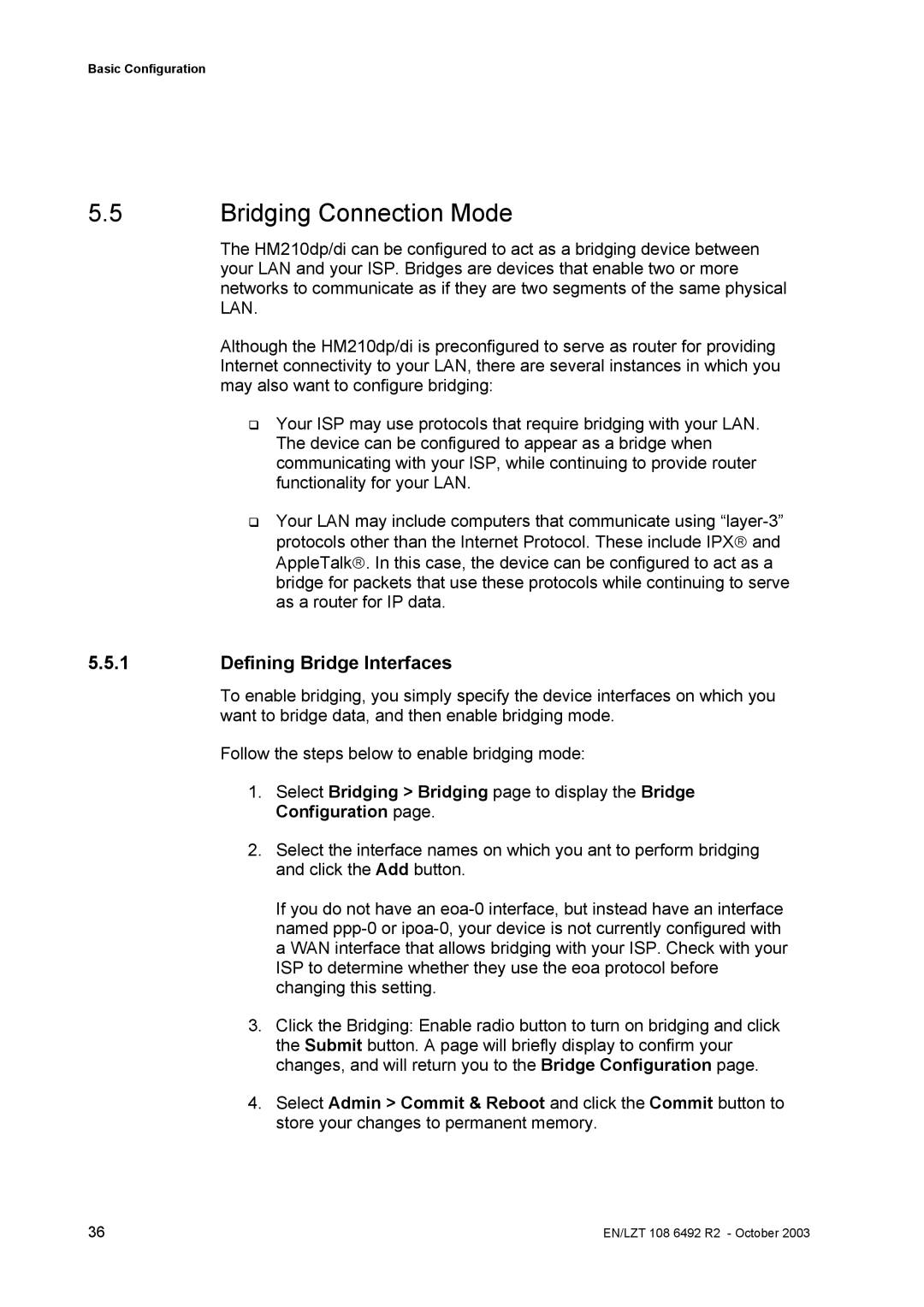Basic Configuration
5.5Bridging Connection Mode
The HM210dp/di can be configured to act as a bridging device between your LAN and your ISP. Bridges are devices that enable two or more networks to communicate as if they are two segments of the same physical LAN.
Although the HM210dp/di is preconfigured to serve as router for providing Internet connectivity to your LAN, there are several instances in which you may also want to configure bridging:
Your ISP may use protocols that require bridging with your LAN. The device can be configured to appear as a bridge when communicating with your ISP, while continuing to provide router functionality for your LAN.
Your LAN may include computers that communicate using
5.5.1Defining Bridge Interfaces
To enable bridging, you simply specify the device interfaces on which you want to bridge data, and then enable bridging mode.
Follow the steps below to enable bridging mode:
1.Select Bridging > Bridging page to display the Bridge Configuration page.
2.Select the interface names on which you ant to perform bridging and click the Add button.
If you do not have an
3.Click the Bridging: Enable radio button to turn on bridging and click the Submit button. A page will briefly display to confirm your changes, and will return you to the Bridge Configuration page.
4.Select Admin > Commit & Reboot and click the Commit button to store your changes to permanent memory.
36 | EN/LZT 108 6492 R2 - October 2003 |
